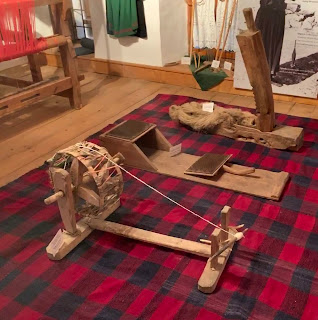The Culture Administrator of Margariti, Mr. Mparatsas, met us at the gate with his wife and son. They were kind enough to be our tour guides. For me, it was one more highlight of my Margariti life and I thank them with all my heart for their patience and kindness.
Our journey begins at the gate of this typical Old Margariti house which has been restored and preserved with funds from Greek philanthropist, Stavros Niarhos. It is the villagers, however, who have made it most authentic by donating original items from their own homes. The archway above the gate is adorned with the signature flower that is seen throughout ancient Greek architecture.


Typically, in the old days, the first floor areas were reserved for storage. The museum designers, however, have posted information along the walls downstairs and they've put small household items on display. It is the second floor, though, that is most engaging. The small wooden stairs are, in themselves, an exquisite experience. One can only imagine the former inhabitants while climbing the curved steps, carefully navigating the low staircase ceiling.
There are numerous items throughout that are labeled and in very good condition, giving the viewer an excellent rendition of what life might have been like.



For someone like me, a person who was introduced to Margariti at the dawn of change, this experience actually brings me back in my own history as a Nifi here. Certainly, I do not pretend to understand the hardships of such a life, as I've shown in my tribute to the women of Eprirus in the blog post, Artifacts Left Behind: Epirote Women. But I did witness much of that life as it had barely changed since the turn of the century. And then with a speed that is hard to fathom, Margariti jumped from the 19th century to the 21st in one generation. For that reason, this museum is even more valuable. It's difficult to explain to those who have not experienced the old life. Thus, when a young Margariti descendant, actually walks into the authentic Old Margariti house on the cobbled street where it originated, those stories from yiayia and papou, from parents, from aunts and uncle, all become real as he or she walks back in time, a time that was not so long ago.
To those who constructed and contributed to the museum, I say, Bravo! But mostly, I appreciate the effort by those who maintain this treasure.
Here are the links for The Nifi, Your Own Kind, and Among the Zinnias. I hope you'll give one of them a try!










Omg this is so cool!
ReplyDelete